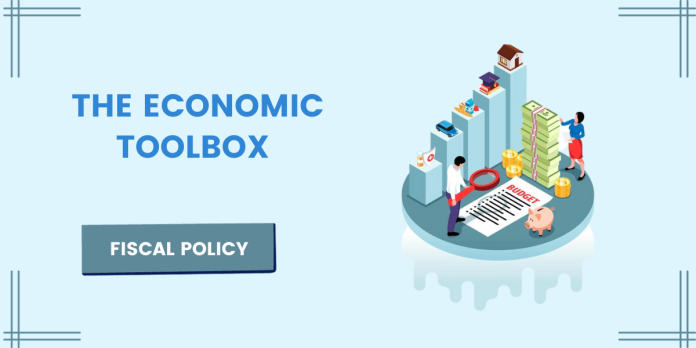Fiscal policy is the use of government spending and taxation to influence the economy. It is one of the two main tools of macroeconomic policy, along with monetary policy. Fiscal policy can be used to achieve a variety of economic goals, such as promoting economic growth, reducing unemployment, and stabilizing the price level.
Types Of Fiscal Policy
There are two main types of fiscal policy: expansionary and contractionary.
Expansionary fiscal policy is used to stimulate the economy. This can be done by increasing government spending, reducing taxes, or both. Expansionary fiscal policy is typically used during economic downturns, when the economy is producing less than its potential output and unemployment is high.
Contractionary fiscal policy is used to slow down the economy. This can be done by decreasing government spending, increasing taxes, or both. Contractionary fiscal policy is typically used during periods of high inflation or economic overheating.
Read: All you Need to Know about Inflation
Tools Of Fiscal Policy
The government has a variety of tools at its disposal to implement fiscal policy. Some of the most important tools include:
- Government spending: The government can increase or decrease its spending on goods and services, such as infrastructure, education, and healthcare. This can have a significant impact on the economy, as government spending is a major component of aggregate demand.
- Taxation: The government can raise or lower taxes to influence the economy. For example, the government can cut taxes to stimulate the economy by giving consumers and businesses more disposable income.
- Transfer payments: The government can make transfer payments to individuals and businesses, such as Social Security benefits, unemployment insurance, and tax credits. Transfer payments can help to support low-income households and businesses, and they can also be used to stimulate the economy.
How Fiscal Policy Works
Fiscal policy works by influencing the level of aggregate demand in the economy. Aggregate demand is the total demand for goods and services in the economy. It is composed of four components: consumption, investment, government spending, and net exports.
Expansionary fiscal policy increases aggregate demand by increasing government spending or reducing taxes. This leads to higher economic growth and lower unemployment. However, expansionary fiscal policy can also lead to inflation if the economy is already at full capacity.
Contractionary fiscal policy decreases aggregate demand by decreasing government spending or increasing taxes. This leads to lower economic growth and higher unemployment. However, contractionary fiscal policy can also help to reduce inflation.
Goals Of Fiscal Policy
The government’s goals for fiscal policy vary depending on the state of the economy. During economic downturns, the government’s primary goal is to stimulate the economy and reduce unemployment. This can be done by increasing government spending and/or reducing taxes.
During periods of high inflation, the government’s primary goal is to slow down the economy and reduce inflation. This can be done by decreasing government spending and/or increasing taxes.
Benefits and Drawbacks Of Fiscal Policy
Benefits:
Fiscal policy can be used to achieve a variety of economic goals, such as promoting economic growth, reducing unemployment, and stabilizing the price level.
Fiscal policy is a relatively flexible tool, as the government can quickly adjust its spending and taxation policies in response to changes in the economy.
Drawbacks:
Fiscal policy can have negative consequences, such as inflation and budget deficits.
Fiscal policy can be politically difficult to implement, as it often involves raising taxes or cutting spending.
Conclusion
Fiscal policy is a powerful tool that governments can use to influence the economy. It can be used to promote economic growth, reduce unemployment, and stabilize the price level. However, fiscal policy can also have negative consequences, such as inflation and budget deficits.
Disclaimer: This blog has been written exclusively for educational purposes. The securities mentioned are only examples and not recommendations. It is based on several secondary sources on the internet, and is subject to changes. Please consult an expert before making related decisions.


